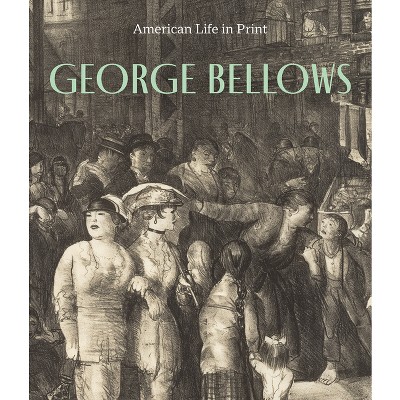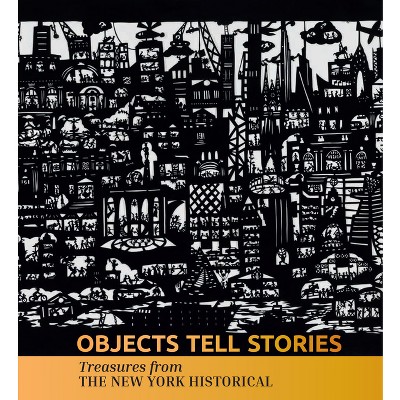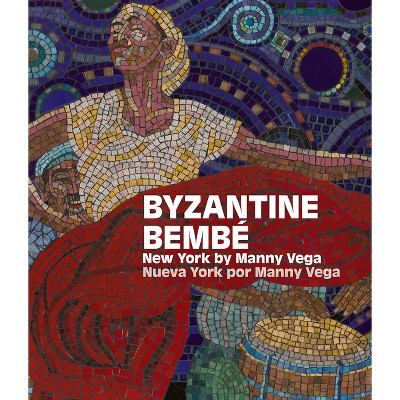Sponsored

The Gilded Life of Richard Morris Hunt - by Sam Watters (Hardcover)
In Stock
Sponsored
About this item
Highlights
- The illustrated story of the life and times of architect Richard Morris Hunt, his forty-year career, and his impact on American culture after the Civil War.Winner of the Victorian Society in America 2025 Book Award.Celebrated internationally in the nineteenth century as America's premier architect, Richard Morris Hunt (1827-1895) is best known for his opulent Gilded Age Vanderbilt mansions, including Biltmore, the Breakers, Marble House, and other landmark works.
- About the Author: Sam Watters lectures and writes about forces that shaped American art, architecture, and landscape before World War II.
- 312 Pages
- Biography + Autobiography, Artists, Architects, Photographers
Description
About the Book
"Celebrated internationally in the nineteenth century as America's premier architect, Richard Morris Hunt (1827-1895) is best known for his opulent Gilded Age mansions, including Biltmore, the Breakers, Marble House, and other landmark works. Yet Hunt's impact on American culture after the Civil War ranges far beyond his elegant palaces. In The Gilded Life of Richard Morris Hunt, historian Sam Watters reveals Hunt's remarkable influence in creating the institutions and conventions that transformed Old World values into his generation's idea of an American civilization, through architecture, interior design, sculpture, painting, and the ardent advocacy of artisan trades. The first American to study at the renowned âEcole des Beaux-Arts in Paris, Hunt cultivated a transatlantic network of wealthy, influential men during a period of class revolution. Fearful of losing their industrial fortunes and values to the laboring immigrant poor-and driven by a moral obligation to instruct the masses in what was beautiful, true, and good-Hunt's society concurred on what was needed to define, protect, and perpetuate their ideas of a civil society. To this end and to instill the Eurocentric culture required for global acceptance and dominance, they conceived and built museums, libraries, skyscrapers, apartment houses, and castles. Watters repositions Hunt's life and forty-year career in light of new discoveries and connections made through his meticulous study of the Richard Morris Hunt Collection at the Library of Congress. Featuring Hunt's drawings, images he collected, and portraits of his family and privileged inner circle, this dynamic biography evokes the powerful social and financial networks that defined the contours and content of American culture. This visually rich portrait of life and thought among America's ruling one percent features 200 illustrations that include selections from the Library's archives, along with illuminating new floor plans and photographs"--Book Synopsis
The illustrated story of the life and times of architect Richard Morris Hunt, his forty-year career, and his impact on American culture after the Civil War.
Winner of the Victorian Society in America 2025 Book Award.
Celebrated internationally in the nineteenth century as America's premier architect, Richard Morris Hunt (1827-1895) is best known for his opulent Gilded Age Vanderbilt mansions, including Biltmore, the Breakers, Marble House, and other landmark works. Yet Hunt's impact on American culture after the Civil War ranges far beyond his lavish palaces. In The Gilded Life of Richard Morris Hunt, historian Sam Watters reveals Hunt's remarkable influence in creating the institutions and their conventions that transformed Old World traditions into his generation's idea of an American civilization, through architecture, interior design, sculpture, painting, and the ardent advocacy of artisan trades.
Watters repositions Hunt and his forty-year career in light of new discoveries and connections made through his meticulous study of the Richard Morris Hunt Collection at the Library of Congress. Featuring 200 illustrations, including Hunt's drawings, images he collected, portraits of his privileged New York and Newport inner circle, and new photographs and plans, this dynamic biography follows the contours of American thought that shaped Hunt's life and work among the ruling one percent.
Review Quotes
"A thoroughly researched, compelling biography of a leading U.S. architect. It is a beautifully produced volume, amply illustrated with period and recent photographs and, most strikingly, captivating drawings and sketches."--Jonah Rowen, The Journal of Southern History
[A]n indispensable guide to the life and work of Hunt."--Michael J. Lewis, The New Criterion
Historian Watters...skillfully brings the collection to life through his telling of Hunt's long career and wide-ranging milieu while revealing new discoveries and connections." "A definitive illustrated biography."--Megan Farrell, Library Journal
"Sam Watters's new book on the "Architecture & Art for an American Civilization,"...follows Hunt's upbringing, education, and prolific output through two hundred illustrations and new photography by Michael Froio, covering his work from the pedestal of the Statue of Liberty, to Newport's most opulent "cottages," to the Great Hall of the Metropolitan Museum of Art."--James Panero, The New Criterion
"The lavish illustrations in the book are of a piece with the opulence of Hunt's designs."--Apollo
"A fascinating and important account of the life and architectural genius of Richard Morris Hunt. So many of Hunt's remarkable creations have been lost, but in these pages, their beauty and majesty are brought back to life."--Anderson Cooper, journalist and New York Times bestselling author of Vanderbilt: The Rise and Fall of an American Dynasty
"Sam Watters has composed a thoughtful, complex and startlingly haunting memorial, in images and words, to the life and work of Richard Morris Hunt--the patrician architect who more than any other single builder and taste-maker set the look and feel and architectural tone of the Gilded Age. Alert to what is most aspirational and most troubling about Hunt's astonishing career, Watters has created a crucial and in many ways definitive account of the master builder of America in its ascendant age."--Ric Burns, filmmaker, director of the award-winning New York: A Documentary Film
"In the wall of Central Park, on Fifth Avenue, at 70th Street, is a colonnaded exedra and seat. This ornate edifice is the Richard Morris Hunt Monument. Undoubtedly, no other architect in America is commemorated with such magnificence. With The Gilded Life of Richard Morris Hunt: Architecture and Art for an American Civilization Sam Watters explains all the things that make this shrine so well deserved. Aesthetically and culturally, Hunt didn't just make New York more imposing. Succeeding in a mission to elevate and ennoble American architecture, he transformed the look of the entire nation. With the same erudition, Sam Watters succeeds in showing us how."--Michael Henry Adams, writer, lecturer, historian, activist, and author of Harlem: Lost and Found
About the Author
Sam Watters lectures and writes about forces that shaped American art, architecture, and landscape before World War II. An author of numerous books, columns, and essays, his first volume in association with the Library of Congress, Gardens for a Beautiful America 1895-1935: Photographs by Frances Benjamin Johnston (2012), won the Botanical and Horticultural Libraries Annual Literature Award. He lives in New York and California.Michael Froio is a photographer and educator in the Philadelphia metropolitan area. His commissioned work includes architectural, railroad, and heavy industry documentation and research projects in various mediums. His work resides in noted collections, including the Library of Congress, the Philadelphia Museum of Art, the Woodmere Museum, and the Camden County Arts Bank collection.











